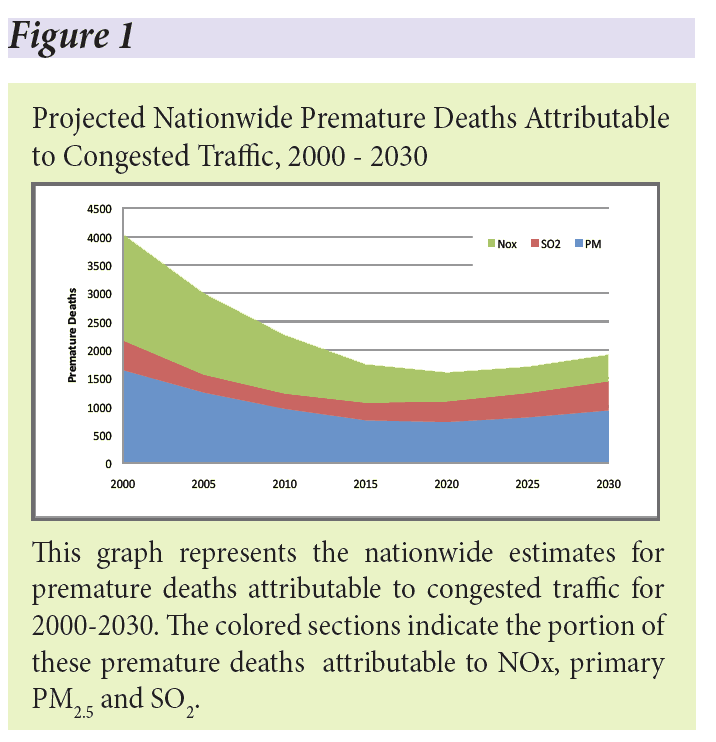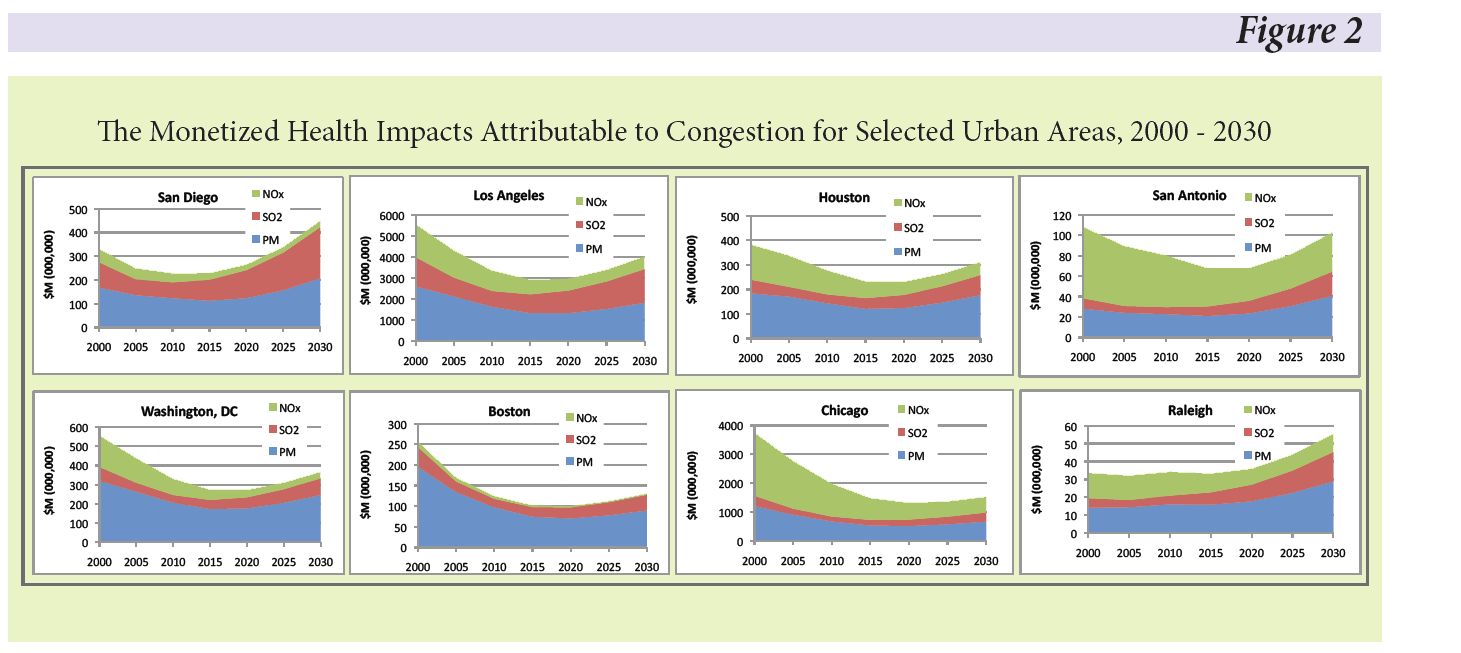HARVARD CENTER FOR RISK ANALYSIS
A Health Risk Assessment
By: Jonathan I. Levy, Jonathan J. Buonocore, & Katherine von Stackelberg
Traffic congestion is a significant issue in virtually every urban area in the United States and around the world. Anyone who spends any time commuting knows that the time and fuel wasted while sitting in traffic can not only be annoying, but can lead to real economic costs. An examination of the peer-reviewed literature shows that there are many previous analyses that estimate the economic costs of congestion based on fuel and time wasted, but that these studies don’t include the costs of the potential public health impacts. Sitting in traffic leads to higher tailpipe emissions which everyone is exposed to, and the economic costs of those exposures have not been explored.
Motor vehicle emissions contain pollutants that contribute to outdoor air pollution. One in particular, fine particulate matter (referred to as PM2.5) is strongly influenced by motor vehicle emissions. Studies that evaluate the sources of PM2.5 in our environment find that vehicles contribute up to one-third of observed PM2.5 in urban areas. PM2.5 has been associated with premature deaths in many studies, and health impact assessments have shown PM2.5-related damages on the order of hundreds of billions of dollars per year. Recently, an expert committee convened by the Health Effects Institute in Boston, Massachusetts, summarized the available evidence on exposure to traffic-generated air pollution and negative health effects. They find strong evidence for a causative role for traffic related air pollution and premature death, particularly from heart attacks and strokes. PM2.5 is emitted directly, and it is also produced by secondary formation, as sulfur dioxide (SO2) and nitrogen oxide (NOx) emissions contribute to the formation of sulfate and nitrate particles. Exposure to PM2.5 also causes other health effects such as asthma attacks, and other respiratory illnesses.
In this study, we evaluate the premature deaths resulting from people breathing primary PM2.5 and secondarily-formed particles during periods of traffic congestion and compare that to the economic costs from time and fuel wasted. We do this analysis for 83 individual urban areas. We predict how much congestion to expect in each of the 83 urban areas over the period 2000 to 2030. We use several inter-linked models to predict how much of what people are breathing in each urban area is attributable to emissions from traffic congestion. The models predict how many people will die prematurely as a result of being exposed to these traffic conditions over the long term. We assign a dollar value to the predicted deaths using a “value of a statistical life” approach as is done for most regulatory impact analyses. The analysis explores the significance of public health impacts in assessments of predicted traffic congestion to identify information gaps to be addressed to better determine the ongoing public health burden of congestion in the United States, and to set the stage for evaluating potential strategies for relieving traffic congestion. Evaluating such strategies will require models and assumptions that take advantage of conditions and the context unique to each area.
We estimate traffic congestion-related PM2.5, NOx and SO2 emissions in these 83 cities caused approximately 4,000 premature deaths in the year 2000, with a monetized value of approximately $31 billion (in 2007 dollars). This compares to the estimated $60 billion congested-related cost of wasted time and fuel in these communities during the same year. This fuel and time loss is expected to continue to grow annually over the next 20 years. Across cities and years, the public health impacts of traffic congestion range from an order of magnitude less than the lost time/fuel economic impacts, to in excess of these impacts, with variation attributable to the extent of congestion, population density, and other factors.
We forecast the mortality and public health costs of congestion, however, will diminish slightly over time in most of the areas studied—until rising again toward the end of the modeling period, 2030. In 2005, for example, we estimate congestion-related premature mortality of 3,000 lives, with a monetized value of $24 billion (in 2007 dollars). This reduction results from the continual turnover of the motor vehicle fleet to lower emission vehicles and the increased use of cleaner motor fuels.
Our estimates of the total public health cost of traffic congestion in the U.S. are likely conservative, in that they consider only the impacts in 83 urban areas and only the cost of related mortality and not the costs that could be associated with related morbidity, health care, insurance, accidents, and other factors. Our analyses indicate that the public health impacts of congestion are significant enough in magnitude, at least in some urban areas, to be considered in future evaluations of the benefits of policies to mitigate congestion.
Download full version (PDF): The Public Health Costs of Traffic Congestion
About the Harvard Center for Risk Analysis
www.hcra.harvard.edu
“Harvard Center for Risk Analysis (HCRA) is a multidisciplinary group of faculty, research staff, students, and visiting scholars who work together to improve decisions about environmental health. We conduct state-of-the-art research, educate the next generation of leaders in risk analysis and related disciplines, and encourage public discourse about risk topics. Our work in each area is introduced below. To learn more about HCRA, please contact any member of our faculty or research staff.”
Tags: Harvard Center for Risk Analysis, Harvard University, HCRA, Jonathan I. Levy, Jonathan J. Buonocore, Katherine von Stackelberg, Public Health








 RSS Feed
RSS Feed